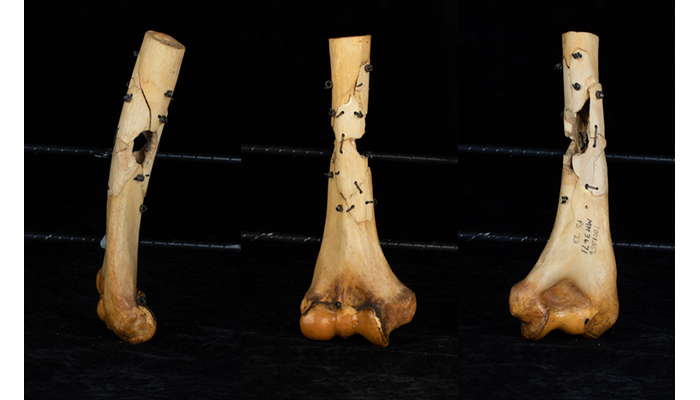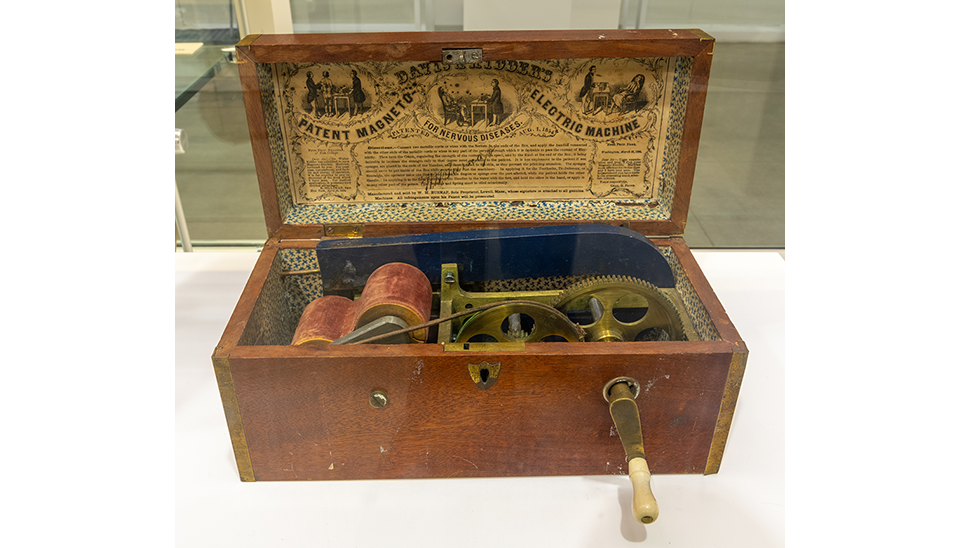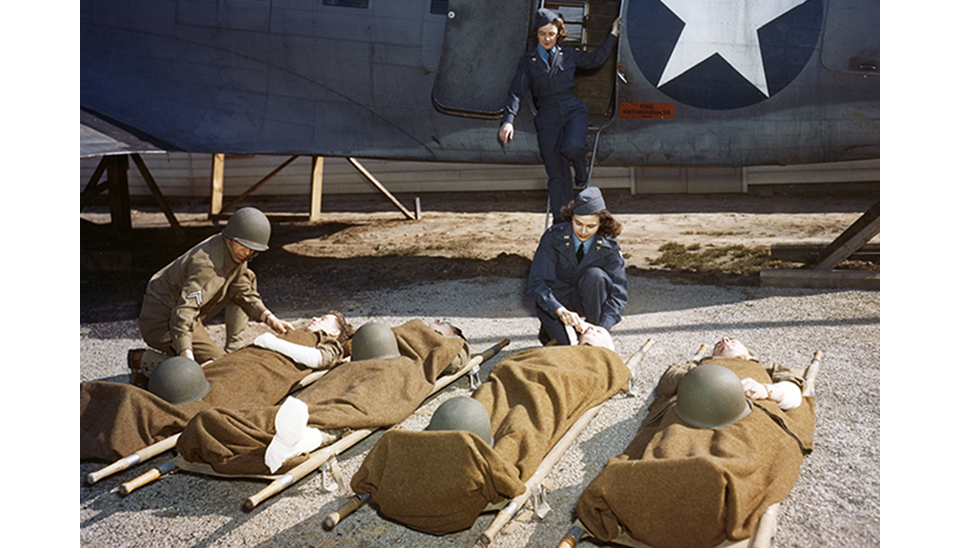Dr. William Williams Keen, Jr. (January 19, 1837 to June 7, 1932) was an American doctor whose long, illustrious career was bookended by more than half a century of military medical service. His career began as an Assistant Surgeon for the Union Army in the Civil War and concluded as a Major in the Medical Corps entering World War I at the age of 80 years. Throughout his long career, Keen was a research enthusiast and driving force for the application of new methods, including the focus on the study of wounds during the Civil War, the birth of bacteriology, antisepsis, and sterile technique in the latter part of the 19th century, as well as the revelatory discovery that insects acted as vectors of disease. With a unique perspective, having served in these two historic wars, Keen penned a paper in 1918 ("Military Surgery in 1861 and in 1918") marveling at the amount of knowledge gained in the field of military medicine during those 50 years and expressed his excitement for what was bound to come in the next 50 years and beyond.
.png)
This is a small bronze plaque of Dr. William Williams Keen modelled in 1909 by R. Tait McKenzie. This plaque was gifted by McKenzie to the Surgeon General's office in 1919 and later donated to the museum. A larger version was created and mounted in the library at Brown University, Keen's alma mater.[M-900.00204](National Museum of Health and Medicine digital scan)
Keen graduated from Brown University prior to attending medical school. In 1861, while still in the midst of his studies at Jefferson Medical College, he was recommended by his instructor, Dr. John Hill Brinton, to fill the role of Assistant Surgeon for the Fifth Massachusetts Regiment, an assignment he accepted with much apprehension due to what he considered his own lack of experience and knowledge. He found himself receiving a harsh education at the First Battle of Bull Run, where he quickly realized that improvisational skill would be an asset. After that brief stint, he returned to receive his medical degree from Jefferson in 1862, and then rejoined the Union Army as Acting Assistant Surgeon, also known as a contract surgeon. He was once again called upon by Brinton, now the first curator of the newly created Army Medical Museum (now the National Museum of Health and Medicine), to gather specimens from the battlefield for the museum. While tending to the wounded of the Second Battle of Bull Run and Battle of Antietam, he became one of the first contributors of specimens, many of which remain in the museum's collection today. His name appears in numerous cases throughout the Medical and Surgical History of the War of the Rebellion (MSHWR).
.png)
A page scan from The Medical and Surgical History of the War of the Rebellion detailing one of many cases submitted to the museum by Keen. (National Museum of Health and Medicine digital scan)

The right humerus of Pvt. John Varter, Company C, 13th New York. Varter was injured at Bull Run, Virginia on August 30, 1862. The arm was amputated by Acting Assistant Surgeon William W. Keen on September 7, 1862. [Left to right: 100720-D-TY520-1027, 100720-D-TY520-1024, 100720-D-TY520-1026]
It was also during this period that he developed a specific interest in injuries of the nervous system while working in the Union Army's Christian Street and Turner's Lane Hospitals in Philadelphia. Both hospitals were devoted to such injuries. Here he studied and documented neurological cases with Dr. Silas W. Mitchell and Dr. George R. Morehouse for Gunshot Wounds and other Injuries of Nerves, a somewhat complementary text to MSHWR, and considered to be the origin of American neurology. Thus began Keen's long and famous career as "America's first brain surgeon."
Already a renowned surgeon, Keen gained additional notoriety for being the first to perform a successful (benign) brain tumor removal in the Americas in 1887. This led to his being summoned by President Grover Cleveland's personal physician in 1893 to lead a team of doctors performing a secretive, and now infamous, operation on the president. The public was not made aware of any illness that afflicted President Cleveland, but rather was informed that he was having "dental work." The shrouded truth remained until 1917, when Keen publicly verified in a self-authored article ("The Surgical Operations on President Cleveland in 1893") that he had removed a rather extensive oral lesion from the palate of the president's mouth while they traveled aboard a yacht off Long Island, New York. The anonymous biopsy that prompted the need for surgery was diagnosed as a "probable epithelioma" at the Army Medical Museum, so the surgery moved forward due to the lack of a conclusive diagnosis. A second surgery was performed just 16 days after the first to induce peace of mind for all parties involved and President Cleveland suffered no recurrence of tumor during his lifetime.
.png)
These are histology slides from a 1980 recut of President Cleveland's 1893 palatal tumor, a suspicious lesion that was covertly removed aboard a yacht in 1893. These sections were created in 1976 to render a contemporary diagnosis of his condition. Pathologists at the University of Pennsylvania concluded that the cancer was verrucous carcinoma, a form common with tobacco use. Upon the re-examination of President Cleveland's case, the pathologists requested tissue slides be shared in consultation with the Armed Forces Institute of Pathology and donated to our Armed Forces Medical Museum (now National Museum of Health and Medicine). [M- 040.00040]
Keen retired from his long teaching career in Philadelphia in 1907, yet remained devoted to the field of medicine and once again to the military in 1917 when he became a Major in the Medical Reserve Corps for the Great War at 80 years of age. He served in an advisory capacity and received a Victory Medal for his contributions. It was during this experience that he lamented all the lives lost in the Civil War that could have been spared if only the surgeons had had a fraction of the newfound knowledge developed during the latter part of the 19th century. He attributed all of that knowledge gained to the successes of rigorous research, which he passionately advocated.
.png)
Service coat worn by Major William Keen, Office of the Surgeon General, during World War I. (M-350.00024)
Keen played an integral part in building the collections of the museum during its genesis and would undoubtedly be pleased to see the medical knowledge gained during his lifetime--and the yet-to-be discovered medical advances that he excitedly anticipated--explored in the museum's exhibits highlighting innovation in American military medicine.
References
The Medical and Surgical History of the War of the Rebellion. Government Printing Office, 1883.
Bingham, William F. "W. W. Keen and the dawn of American neurosurgery," Journal of Neurosurgery 64, 5: 705-712, accessed Oct 29, 2020.
Brooks JJ, Enterline HT. "The Final Diagnosis of President Cleveland's Lesion." JAMA. 1980; 244(24):2729.
Keen, William Williams.Addresses and Other Papers. Philadelphia and London: W. B. Saunders & Co., 1905.
Keen, William Williams. The Treatment of War Wounds. Philadelphia: W.B. Saunders, 1917.
Keen, Major W.W. "Military Surgery in 1861 and in 1918."The ANNALS of the American Academy of Political and Social Science 80, no. 1 (January 1918): 11â22.




